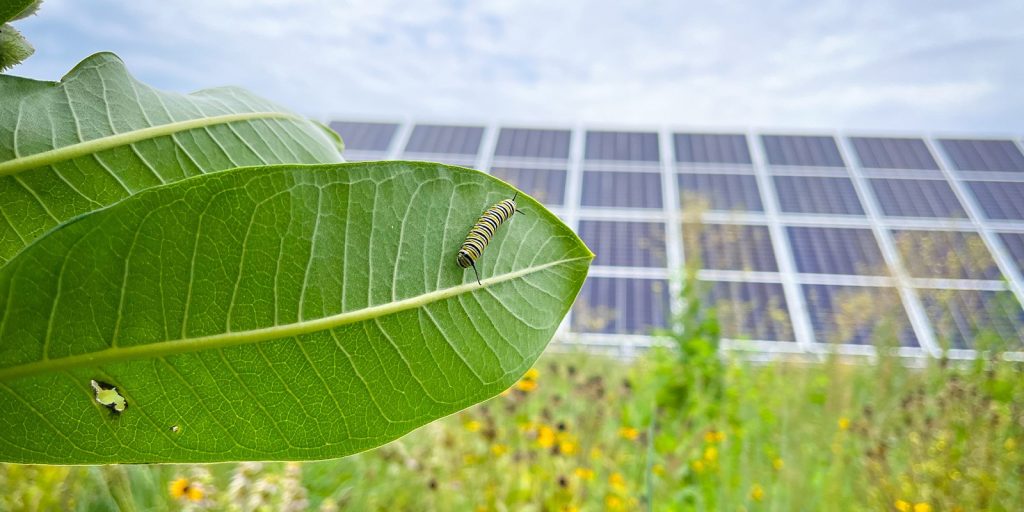[ad_1]

A five-year study of solar farms planted with wildflowers and native grasses discovered that native bees showed a 20-fold increase in numbers.
Researchers at the US Department of Energy’s Argonne National Laboratory and National Renewable Energy Laboratory wanted to understand how insect pollinators respond to utility solar farms planted with native grasses and wildflowers.
They conducted the five-year field study because, surprisingly, there had previously been little field data available. The scientists collected data from two Enel Green Power North America solar farms in southern Minnesota built on retired agricultural land.
The two solar farms were planted with native grasses and wildflowers in early 2018. From August 2018 through August 2022, the researchers conducted 358 observational surveys for flowering vegetation and insect communities. Each time they visited, they evaluated changes in plant and insect abundance and diversity.
By the end of the field campaign, the team observed increases in all habitat and biodiversity metrics.

There was an increase in native plant species diversity and flower abundance. Total insect abundance tripled on the solar farm sites, and the team observed an increased diversity of native insect pollinators and agriculturally beneficial insects, including honeybees and native bees – which showed a 20-fold increase in numbers – butterflies, beetles, and more. Further, the insect pollinators visited soybean flowers in adjacent crop fields. Thriving pollinators make prime farmland more productive.
Lee Walston, an Argonne landscape ecologist, environmental scientist, and the study’s lead author, said, “[The study] demonstrates that, if properly sited, habitat-friendly solar energy can be a feasible way to safeguard insect populations and can improve the pollination services in adjacent agricultural fields.”
The researchers say their findings suggest two important implications: Habitat-friendly solar farms can play an essential role in conserving biodiversity and help mitigate land-use conflicts associated with the conversion of farmland for solar energy production.
Read more: The US government opens 22 million acres of federal lands to solar
If you live in an area that has frequent natural disaster events, and are interested in making your home more resilient to power outages, consider going solar and adding a battery storage system. To make sure you find a trusted, reliable solar installer near you that offers competitive pricing, check out EnergySage, a free service that makes it easy for you to go solar. They have hundreds of pre-vetted solar installers competing for your business, ensuring you get high quality solutions and save 20-30% compared to going it alone. Plus, it’s free to use and you won’t get sales calls until you select an installer and share your phone number with them.
Your personalized solar quotes are easy to compare online and you’ll get access to unbiased Energy Advisers to help you every step of the way. Get started here. –ad*
FTC: We use income earning auto affiliate links. More.
[ad_2]
Source link
